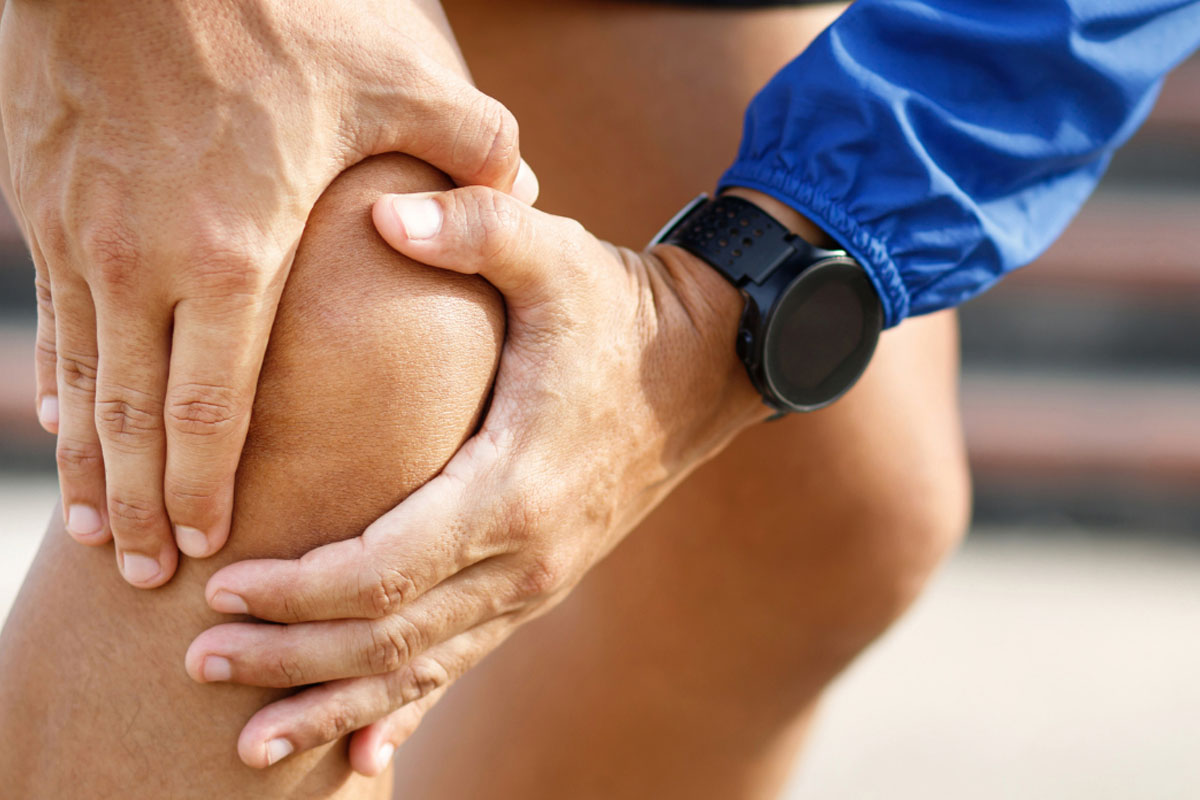Don’t let knee pain hinder your performance
What is Patellofemoral Joint Pain(PFJP)?
It is an umbrella term used for pain arising from the patella femoral joint or surrounding tissue. Causes can include:
- starting a new activity
- overloading for periods of time
- following a period of reduced activity and therefore linked to
- reduced muscle strength
- unsupportive or unsuitable footwear
- muscle imbalances around the hips and knees.
- Often aggravated by squats, stair climbing, up and down slopes.
PFJP is a common cause for knee pain and one that can significantly impact our patients quality of life.
For many of us we will experience some kind of injury or niggling pain at some point in our life. For those that train regularly it can leave us disheartened as why this has occurred and I often see patients that come into clinic and tell me “I’m fit and active and why has this happened to me?”
Knee pain is debilitating. Our knees are our main loading joints and therefore increased forces are being loaded through them which can make one more susceptible to pain. For those that regularly exercise it could be a change in activity or increase in normal activity can set this off. Types of activity may have to change as you age to suit your joints and the pressures being exerted through them.
How can you help yourself?
Seek advice from a physiotherapist.
At Head2Toe Physio, we can help guide you with treatment, exercises and general advice going forward
A recent review has identified a number of treatment modalities which were effective in reducing pain and improving function of the knee at 3 months:
- Knee targeted exercise
- Combined intervention
- Foot orthoses
- Lower quadrant manual therapy
- Injection therapy
- Hip and knee targeted exercise
Being educated about the condition PFJP
We can give you a solid understanding of, the condition and how best to treat. We believe the patient is key to effective rehabilitation and should be actively involved. Your thoughts, feelings, concerns, beliefs and goals will be addressed.
Treating holistically
It has been found that PFJP, if often accompanies by a high level of anxiety and depression within patients. There can be other factors that can increase perceived levels of pain. It may be that discussing sleeping habit, mood changes and coping strategies could be driving pain levels up in some people. For some people just addressing sleep or mood can really have positive effects on pain.
In Conclusion
- Don’t be disheartened and remain positive…. Having PFJP does not mean that you have to stop your activity.
- Seek professional advice. Physiotherapists can help you aim back to your sport.
- Ask questions so you are fully aware of the condition and the physiotherapist will give all the information.
- We want you to improve as much as you do.
At Head2Toe Physio, we can help you work out what stage of injury you’re at and how best to manage things from here on in. Even better we can work with you to try and make sure it doesn’t happen in the first place!
Exercises are often prescribed and a range of manual therapy techniques used. Techniques used might include massage, joint and soft tissue manipulation, acupuncture , taping and electrotherapy.
All our Physiotherapists are highly qualified, experienced, with a variety of post graduate specialisations. If you or anyone you know would like to have a physiotherapy assessment with the team at Dorking , Leatherhead or Crawley , book online here or contact us here.
Blog post guest written by Laura Moore, Senior Physiotherapist, Dorking, Leatherhead, & Crawley Clinics.






